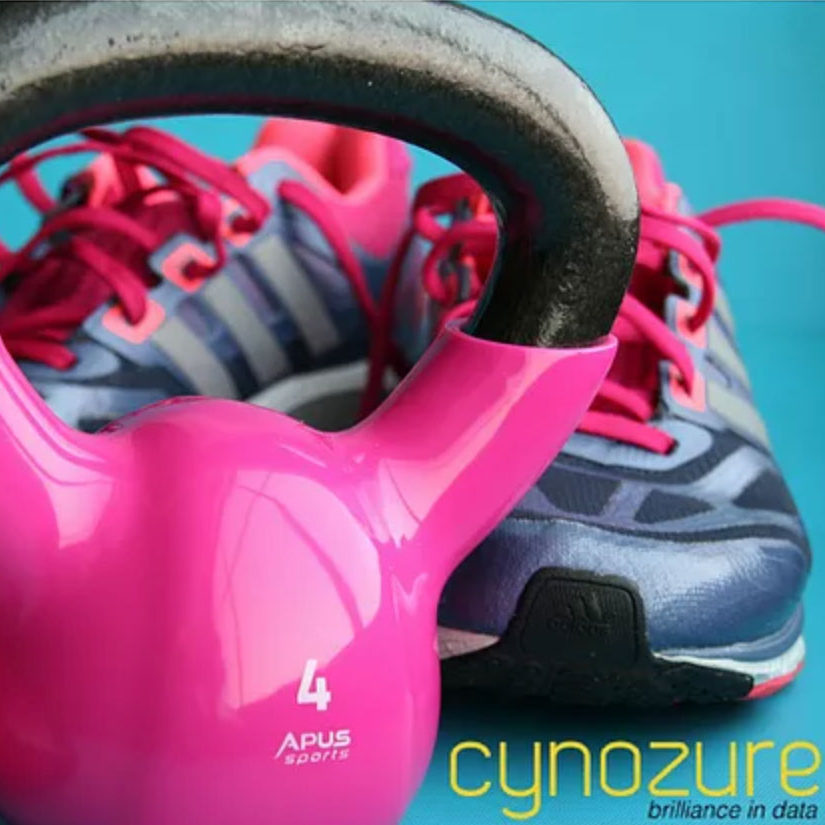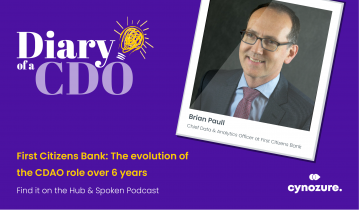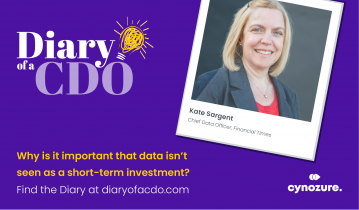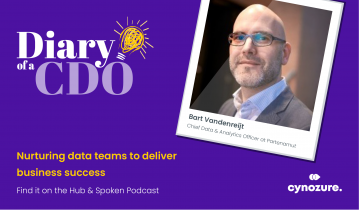Intro
I was at the gym the other day, and it occurred to me that working to maximise data within organisations is a similar activity. The more I think about this, the more parallels I see between getting the best results from fitness training and getting the best results from your data; as well as the types of things to think about when approaching a data strategy or programme.
How can you use this analogy as a way to help your business understand how to maximise data?
Maximise data | Identify your goals

People go to the gym to improve themselves – maybe it’s to improve their health, their appearance, or their overall performance.
These are the same underlying reasons why you need to maximise data. Maybe you want to drive more business change, make amazing customer experiences, or track and manage your company’s performance.
In the gym, there’s an array of different equipment available to use depending on your goals. If you’re trying to improve strength, you use the dumbbells, free weights, pulley machines, TRX. There’s always a new piece of kit that you’re not quite sure out, but the combination of equipment is key to your own improvements.
Same in the world of data. There’s open-source, startup tools, point solutions for specific use cases, vendors that sell everything, data platforms, data science engines. Everything you could need – but what combination is right for you and your strategy?
Maximise data | Approach and planning
Approaches to planning fitness training vary from person to person in the gym. Some people just rock up and decide what to do as they go through their session. Others have a detailed plan divided up by a 12-week horizon, broken down by day, with nutrition, duration and exercise types. Some people have an overall framework to work with, and then evolve their training depending on how they feel, their motivation, their results on each exercise. Some never record what they did, while others keep detailed notes of what they did along with their performance.
Working with a wide array of organisations, I see very similar variety in how people approach their plan for using data – when teams try to understand the impact of their choices and actions in deploying data solutions.
Maximise data | Level of intensity

I also notice that even if you have the same mix of equipment and training plan as someone else, there are different levels of exercise depending on your current fitness level. The speed you run, the incline of the hill, the number of kilos on the bench press, the number of reps, the amount of rest in between each exercise.
The data literacy and maturity of a business helps determine a benchmark from which to plan around, and your ability to get to your goals. You can’t go from an unfit couch potato and expect to sign up to the gym and be an Olympic winning athlete within a couple of weeks. So is the same with data. There is an evolution and change required to improve your level, your maturity and your outcomes.
What are you training for? Just for fitness? Lose some weight? Maybe your first fun run? A triathlon? Marathon De Sable? What you are training for will change the type, intensity and level of training you need to carry out.
Likewise, depending on what use-case you are trying to implement with data or analytics, there will be a different type of data needed, different speed at which that data needs to be available, and different amount of data needed. It will drive whether you need a simple metric to be reported, or an advanced deep learning algorithm.
Maximise data | Continuous innovation for optimum results

After a while of doing the same things at the gym, or with your nutrition, you can hit a plateau. What once got you great gains, or was dropping your weight or your BMI, is no longer reaping the same rewards. New ideas need to be deployed. You need to change the mix of your nutrition, add in some high-intensity interval training, switch up the order of your training, look back and see what used to work.
In data and predictive models, the same can happen. The model becomes outdated, the algorithm no longer performing as it was. Your BI dashboards no longer give the insights and understanding aligned with where your company is at. Time to switch it up, rework the algorithms, add in new data sets, present the visualisations in a way that engage people, run a show and tell to demonstrate what’s possible. The only constant is change, and you should own it (rather than sleepwalk into it, or even worse, miss it).
I was cycling on the watt bikes at the gym last week. These are stationary bikes that can vary speed and power. It links via Bluetooth to an app on your smartphone and to a big screen in front of all the bikes. Through that, you can set your training goals and monitor your performance in real-time. It informs you if your pedal power isn’t high enough and you see the impact of pushing harder straight away. It monitors your pedal quality so you can adjust the push-pull motion and assess improvements in real-time.
These connected devices, fitness wearables and apps are the gym equivalent of the data and analytics assets needed in business. Real-time monitoring of customer activity or trading results with the ability to make changes to your business and see the results.
Maximise data | Expert advice

Having trained at a few gyms over the years and from speaking to others, there always seems to be at least one person not getting it quite right.
The guy you wince at when you see him swinging the weights around – you think that there’s no way that’s doing any good, or worse, they may injure themselves. The one with the spinning bike set up so wrong you can’t quite understand how she’s even pedalling. You may be that person, or even just need a little direction. Fortunately in the fitness world getting a PersonalTrainer or at least some guidance from gym staff is possible.
And from a data perspective, we at Cynozure act like your Personal Trainer, assisting with getting the right plan in place, guiding you through the multitude of technology out there, structuring systems and teams and finding innovative solutions to business issues.
A final thought is that results drive results with training. The better you get or the more your objectives are hit the more you want to do. People start noticing that improvements are being made “have you lost weight?”, “you’re looking well”. Wouldn’t it be great to get the same reaction from your data initiatives in your organisation?








